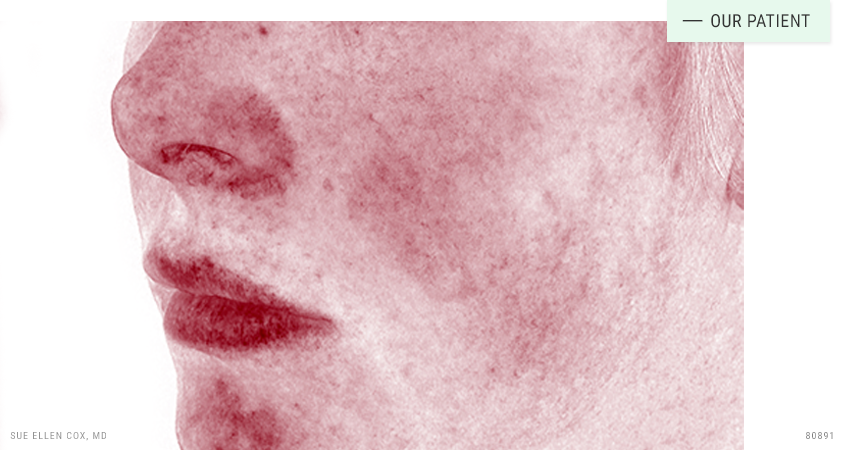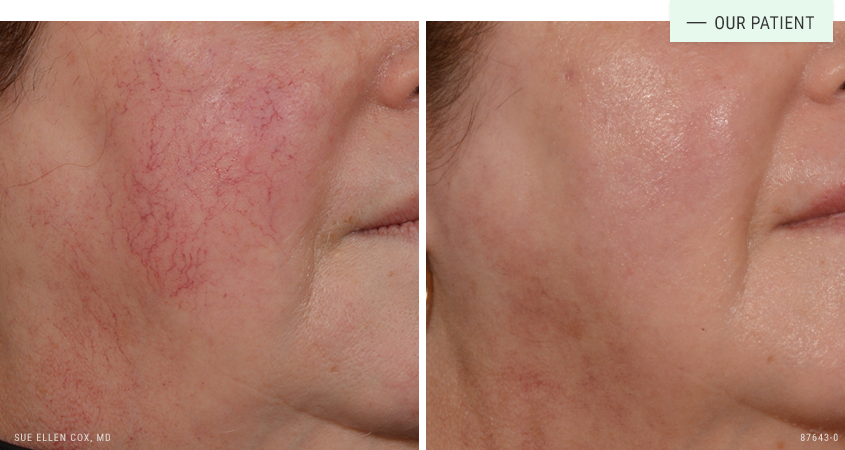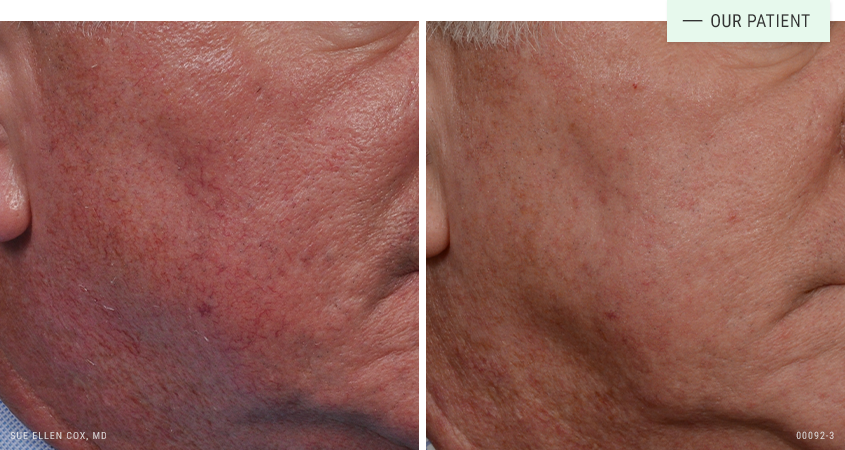V-Beam
Vbeam is a laser procedure that treats redness caused by rosacea, birthmarks, facial and spider veins, warts, vascular lesions, pink stretch marks, cherry angiomas, pink and red acne and other scars.
How does V-Beam work?
V-beam is a pulse dye laser. Pulse dye lasers work by delivering a focused burst of light at a specific wavelength. Different wavelengths can be used to target certain structures within the skin. The V-beam laser operates at wavelengths between 585-595nm, which targets the red color of oxygenated hemoglobin in blood vessels. When treated, blood within the skin absorbs the heat of the wavelength, and causes the vessel to collapse. Your body will then naturally eliminate the collapsed vessels over time. This allows the V-beam laser to selectively target the source of redness without causing other damage to the skin.


Before | After: Visia imaging shows underlying blood vessels and redness before and after one V-beam treatment.
Is V-Beam safe?
The FDA has cleared the V-beam laser to safely treat unwanted redness and red vessels. It has an excellent safety profile. Like any medical procedure, there are risks. As a teacher and trainer of other physicians in laser procedures, Dr. Cox stresses the importance of finding an experienced physician who understands the finer points of laser treatment.
V-Beam downtime
There is no real downtime associated with V-beam treatment. Pinkness or redness of the treated areas is typical immediately after treatment. Mild swelling may be present for a few days after treatment, but this quickly resolves completely.
V-Beam results
V-beam treatment is often focused on the face, but may be used on most areas of the body, including sensitive areas like the hands, neck and chest. It is possible to treat multiple areas of the skin in a single session, and V-beam laser can be performed the same day as most other procedures. V-beam reduces the appearance of acne scars, facial and spider vessels, rosacea, stretch marks, vascular lesions and warts. A series of treatments produce the best results.

Before | After: Vbeam to treat Telangiectasia on the cheek.

Before | After: V-beam effectively treats teleangiectasia (visible vessels) as well as background redness.

Before | After: This patient was bothered by rosacea and overall redness. A series of V-beam treatments produced significant improvement.

Before | After: This patient was bothered by redness and visible vessels.

Before | After: V-beam effectively treats visible vessels on the nose.
